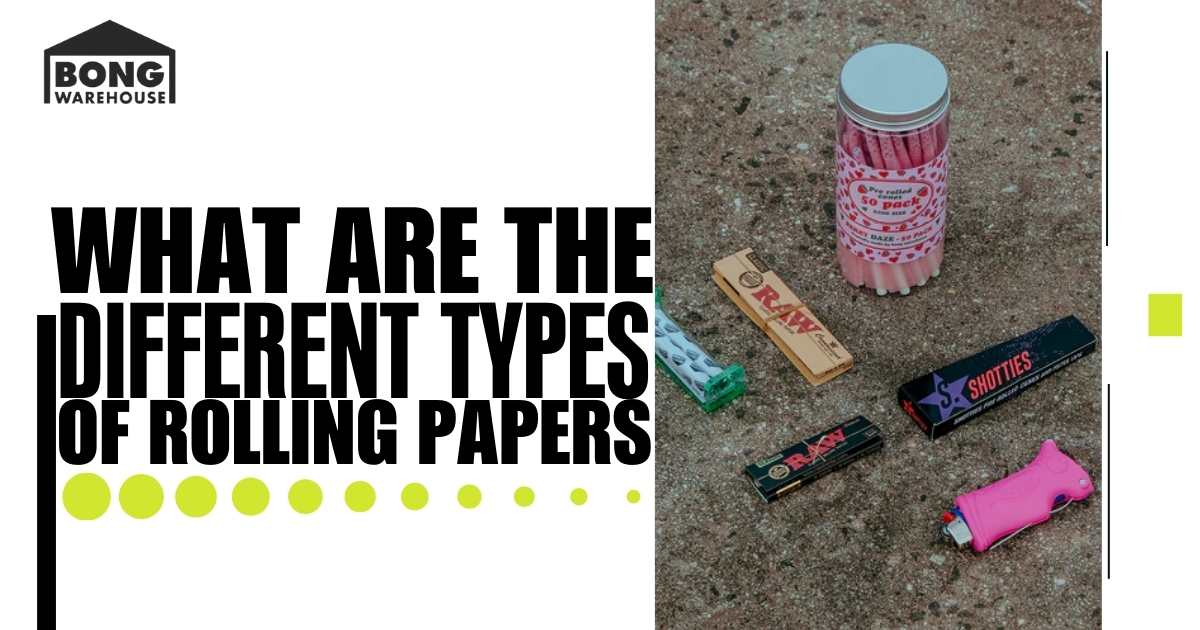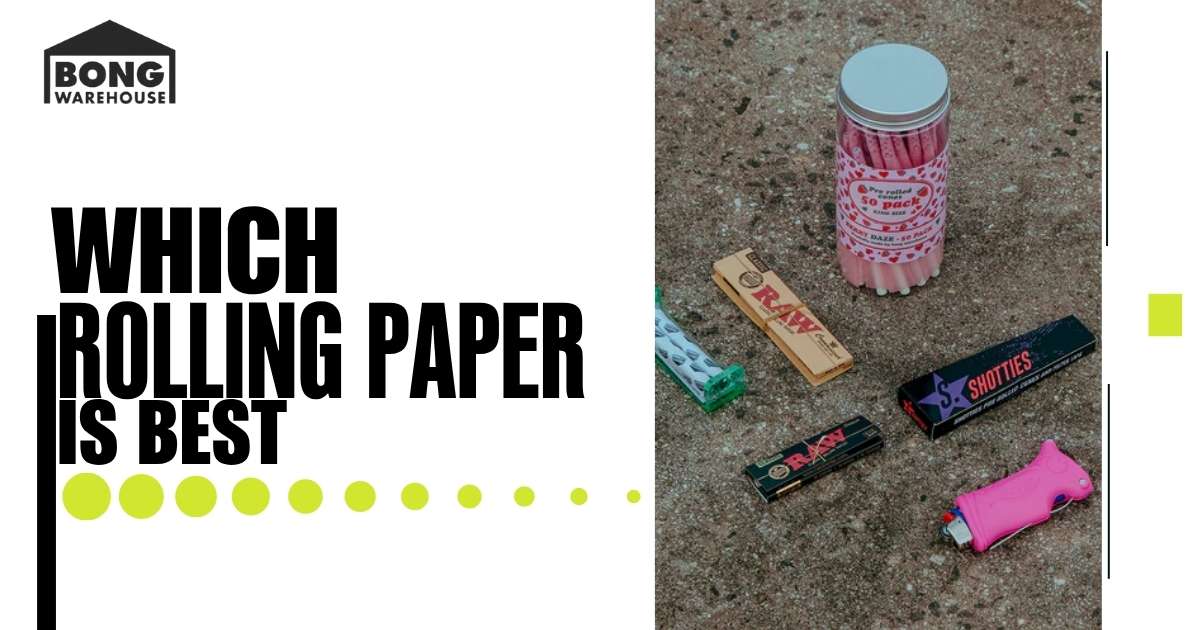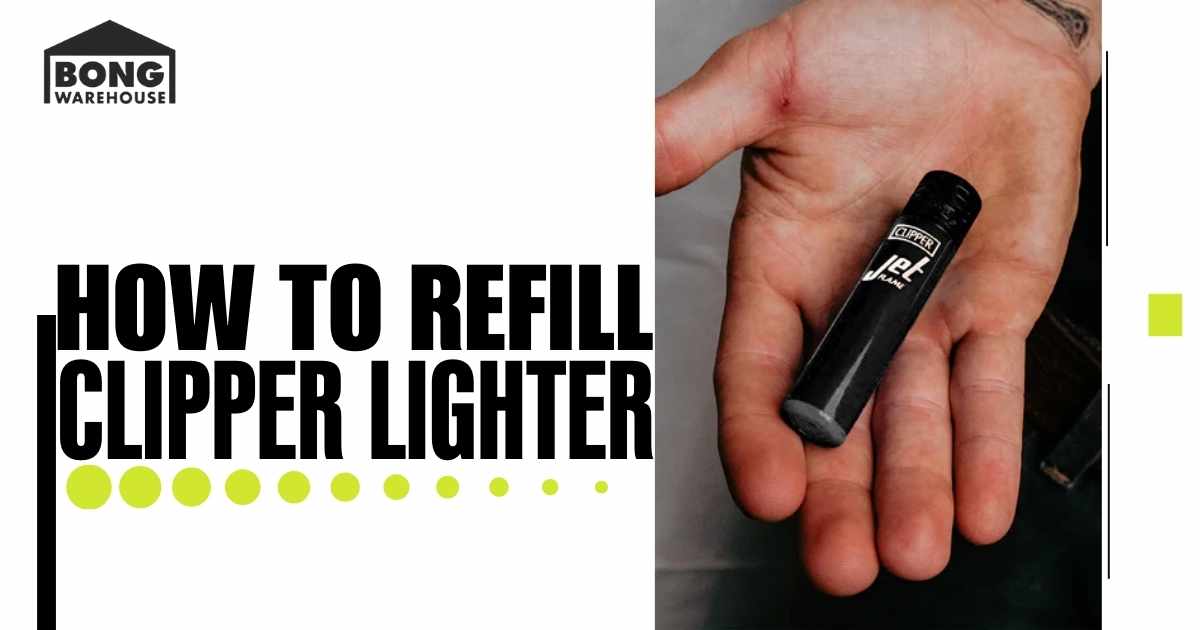What Are the Different Types of Rolling Papers

Stuck with rolling papers that burn too fast, ruin the taste, or just won’t roll right? You’re not alone. With shelves packed full of options—rice, hemp, wood pulp, flavored, unbleached—it’s easy to feel lost trying to choose the right one.
The wrong paper can mess with your smoke, overpower the flavor, or leave you relighting every few minutes. If you're aiming for a smoother, more enjoyable session, it starts with understanding the different types of rolling papers and how each one affects the experience.
Why Choosing the Right Rolling Paper Matters for a Better Smoke
The rolling paper you choose can impact how your joint burns, tastes, and smokes overall. Thicker papers often burn faster and can leave a harsh flavor, while thinner ones like rice or hemp burn slower and cleaner, allowing more of the herb’s natural flavor to come through. Materials also matter—wood pulp is common but not always the smoothest, while unbleached or organic options offer fewer additives for a more enjoyable session.
If your joints burn unevenly, go out mid-smoke, or taste off, the paper could be the issue—not the flower. Finding the right type helps you avoid wasted bud, harsh hits, and frustration. It’s a small choice that makes a noticeable difference in every roll.
What Features Should You Look for in Rolling Papers?
Walking into a smoke shop can be overwhelming—with shelves lined with countless types of rolling papers, each one claiming to offer something special. While many may appear alike at first glance, they can differ a lot in terms of how they perform. Factors like size, flavor, shape, and even visual design all play a role in choosing the right paper for your needs.

- Size: Rolling papers are available in a variety of standard sizes, each suited for different preferences and smoking styles.
- Flavor: Some papers are infused with flavors ranging from mint and cherry to watermelon or chocolate, while others keep it natural with no added taste beyond the paper itself.
- Style: Rolling by hand isn’t always easy, especially for beginners. That’s where pre-rolled cones and wraps come in handy—just fill, twist, and you’re ready to go. For those who prefer a more hands-on approach, booklets with flat sheets are compact and reliable.
- Color and Design: Rolling papers aren’t just functional—they can be fun too. They come in simple white or brown options, as well as bold designs, printed patterns, and even gold or oversized cones designed for social sessions.
What Are the Most Common Materials Used in Rolling Papers?
Here’s an overview of the most widely used materials for rolling papers. Some are more commonly found than others, with varying levels of chemical treatments, while some remain largely unprocessed. Each paper type also has its own burn rate and porosity, affecting the overall smoking experience.

1. Classic Wood Pulp Paper
Wood pulp papers were once the most popular option and are still in use today. These papers are often mixed with other fibers, making them easy to handle. They tend to be thicker than newer types, with options available in bleached (white) or unbleached (brown) variations. Wood pulp is durable and holds its shape well, making it ideal for beginners or those with less steady hands. These papers burn at a medium-fast rate, though they are generally less preferred than other materials due to their burn speed and flavor.
2. Rice Paper
Rice papers are made from pure, natural rice and tend to be thinner than other types. While this is beneficial for your lungs, it can make rolling a bit trickier, as the paper may not grip well and can be affected by humidity. Rice papers are slow-burning and offer a clean smoking experience with minimal aftertaste, making them a good choice for those who want to enjoy the natural flavor of their herb.

3. Flax Paper
Flax, sometimes blended with other materials, offers a unique rolling experience. Made from the long stems of the flax plant, these papers are lightweight, durable, and ultra-fine. While not as common as other types, flax papers have a silky texture that makes them pleasant to handle. They burn slowly and are flavorless, so they don’t interfere with the taste or aroma of your herb, making them a great choice for those seeking a pure smoking experience.
4. Hemp Paper
Hemp papers have gained popularity in recent years, especially among environmentally conscious smokers. Made from hemp fibers instead of wood pulp, these papers are typically light brown in color due to minimal bleaching. Hemp papers are thicker and rougher than rice papers, offering a better grip when rolling. They burn at a medium rate and are less likely to go out than rice papers. While they may leave a subtle aftertaste, they won’t overpower the natural flavors of your cannabis.
5. Esparto Paper
Esparto, a tall grass native to North Africa and Southern Europe, is rarely used for rolling papers due to its undesirable properties. While esparto can be processed into paper, it’s often mixed with wood pulp to make it easier to handle. Esparto paper is known for producing highly carcinogenic smoke when burned, which makes it unsafe for smoking and not recommended for use.
What Is the Difference Between White and Brown Rolling Papers?
Rolling papers vary in porosity, which affects how they control airflow and burn rate. Additionally, some papers include substances that slow the burning process, stabilize the paper, and impact the smoke and ash quality. White rolling papers often contain chemicals like chlorine or calcium carbonate to regulate the burn rate.
Similarly, flavored and colored papers may also contain chemicals or even natural additives that aren't ideal for inhalation. Today, many reputable brands produce papers free of chemical treatments and additives that improve combustion, resulting in a cleaner smoking experience with less aftertaste and potential harm.
Choosing Quality Rolling Papers Matters
The right rolling paper makes all the difference in your smoking experience. Materials like rice, hemp, and flax influence the burn rate, flavor, and smoothness of your joint. For example, rice papers burn slower and cleaner, while hemp papers may have a slight aftertaste but offer a better grip for easy rolling. High-quality papers allow the natural taste of your herb to shine, while lower-quality options can result in harsh hits, uneven burns, or a chemical aftertaste.
At Bong Warehouse, we offer a variety of premium rolling papers to match your preferences and elevate your smoking experience. From unbleached hemp to rice and flax options, we’ve got you covered for a smooth, flavorful session. Visit Bong Warehouse today to find the perfect rolling paper for your next roll and enjoy the difference that quality makes!





